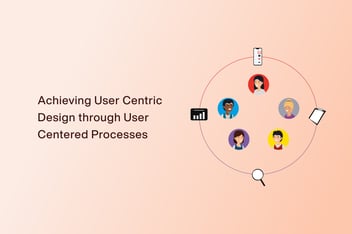A great product experience starts with UX followed by UI. In order to understand what actually works for the user, you need to identify your target users and test your designs. The earlier you conduct testing in your design process, the better your end results will be. Step by step examination of a group of target users and their needs will help you add realistic context to the design process. In this blog, we'll explore some key steps you can take to test your UX design in the early stages, even if you're new to the field.
Setting clear goals
Before diving into the testing process, it's important to define clear goals and objectives that you want to achieve through testing. Setting specific goals will help you stay focused and measure your success throughout the process.
- Prepare the project background
- Establish research goals
- Research questions
- Find the key performance indicators
- Choose a testing methodology
- Identify target participants
- Prepare a script with questions for user testing.
Understanding Your Users
To design for your users, you need to understand them. Conduct user research to gather insights into their behaviors, preferences, and pain points. User research is a continuous part of the product development life cycle. This will provide a solid foundation for creating an intuitive and user-friendly experience.
Creating simple low-fidelity prototypes
Develop low-fidelity prototypes using wireframing tools or even pen and paper. These prototypes should focus on the core functionalities and user flows. Here, the aim is to use these prototypes to analyze the functionality of the design you have created, hence the visual design has very low importance. Low-fidelity prototypes are less complex designs which allow you to quickly iterate and gather feedback early in the design process.
Conducting heuristic evaluation
Perform a heuristic evaluation by applying recognized usability principles or heuristics to your design. Heuristic evaluation involves assessing your design against established guidelines to identify potential usability issues and areas for improvement. This step helps uncover common pitfalls and improve the overall usability of your design.
Put yourself in the user’s shoes
Conduct cognitive walkthroughs by envisioning yourself as the ultimate user. Progress through the user pathways in your design, meticulously assessing each step, and pinpoint any possible obstacles, perplexing interactions, or instances where users might encounter difficulties comprehending or utilizing your design. This method helps uncover usability issues and provides valuable insights for improvement.
Perform user testing
User testing is a crucial step in the process. Conduct usability testing with real target users to observe how they interact with your design. Gather insights into user behaviors, preferences, and pain points using methods like usability study. Ask the participants to vocalize their thoughts and feelings as they navigate through your prototype. This will help you understand user expectations, identify usability problems, and validate design decisions.
Analyze data
During user testing, collect both qualitative and quantitative data. Qualitative data includes feedback, observations, and user comments, while quantitative data can be gathered through task completion rates, time on task, or other relevant metrics. Analyze this data to identify patterns in the quantitative data and trends in the qualitative data. Prioritize this data to identify themes which can be used to identify your design problems.
Iterate and refine
Based on the insights gained from testing, make iterative improvements to your design. Implement changes to address usability issues and enhance the overall user experience. Remember that testing is an ongoing process, and it's important to repeat the cycle as needed to ensure continuous improvement.
Engaging stakeholders
Share the findings and insights from your testing with stakeholders, including clients, developers, and other team members from the beginning of the design phase. Prioritize your insights and collaborate with them to ensure that the design aligns with the project's goals and requirements. Their input and involvement will ensure that the final product meets everyone's expectations.
Document the process
Keep a record of your testing process, findings, and the changes made. This documentation serves as a valuable reference for future iterations, helps maintain consistency, and aids in communicating design decisions to stakeholders. It will also make collaboration with the development team easier.
In conclusion, by prioritizing testing, you save time and resources by catching potential usability issues and making necessary refinements before moving further along in the design process.
This proactive approach leads to a smoother user experience and higher user satisfaction. Remember, the ultimate goal is to create experiences that delight and engage users, making a positive impact on their lives. With early testing, you'll be on the right path to achieving just that.

.png)


.png?width=352&name=Chatgtp%20Blog%20(1).png)